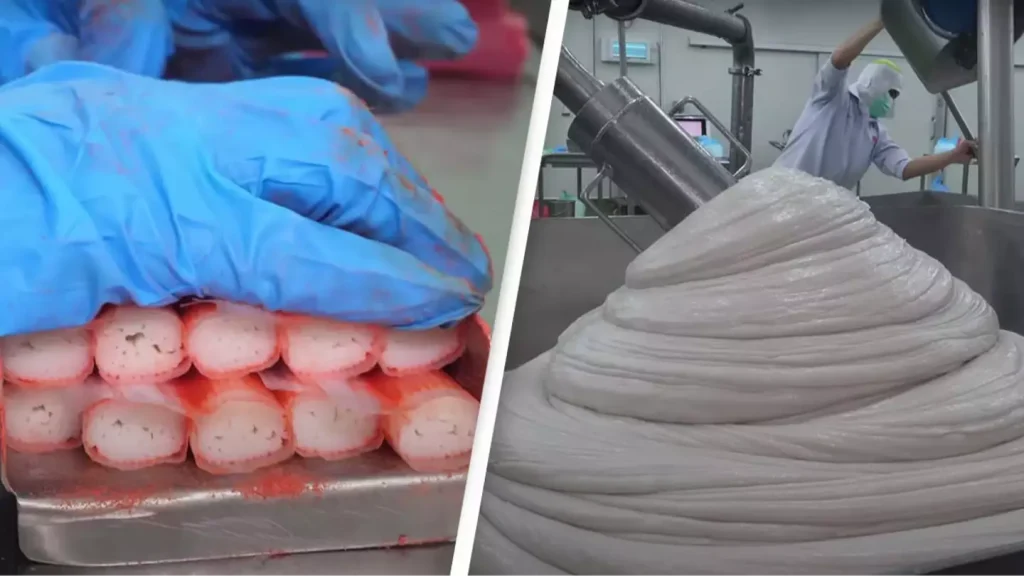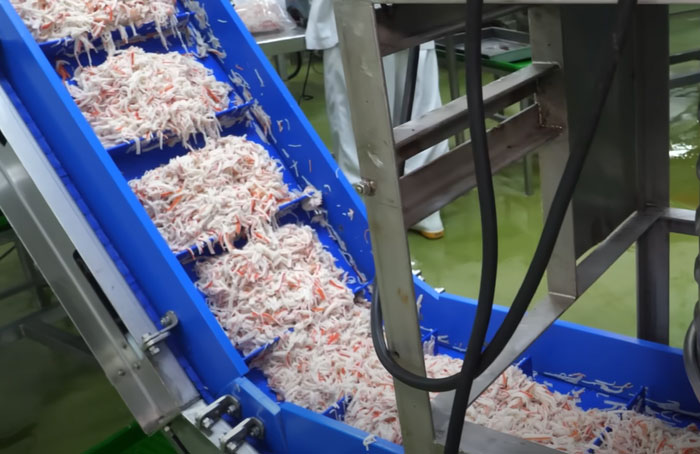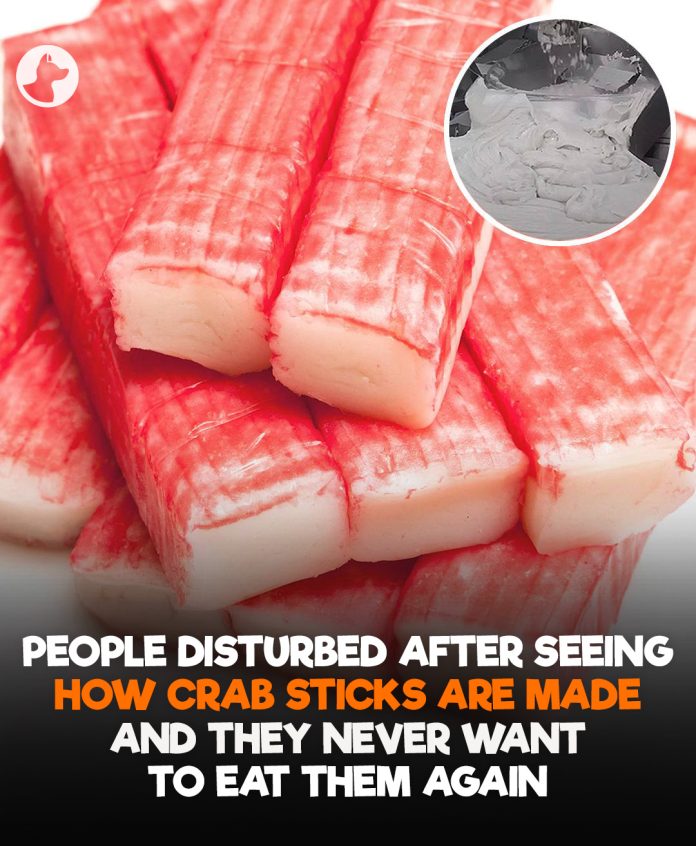A recent revelation about the production of crab sticks has left many seafood lovers disturbed, with some vowing never to eat them again. Once a favorite snack for seafood enthusiasts, these seafood treats have recently come under scrutiny after consumers learned the unsettling truth behind their creation, leaving many questioning their dietary choices.
Crab sticks, long praised for their resemblance to real crab meat, have been a go-to snack for years. However, recent discoveries about how they are made have sparked outrage among some loyal consumers. The truth about the ingredients and manufacturing process has proven to be a major turn-off for many, leading to a wave of disgust and disappointment.
For many, the truth was a stomach-churning revelation. One person commented, “Watching processed food being made really puts you off,” while another wrote, “Yaaaaa I don’t want anything to do with that lmao.” Others simply expressed their dismay, with one user calling it “grim” and another adding, “I’ve known this forever, hence why I don’t eat them.”
The uproar was sparked by a video circulating on Reddit that shows how crab sticks are made. In the footage, it is revealed that the primary ingredient of these treats is not freshly caught crab meat, as many assumed, but rather a combination of white fish (such as Alaskan pollock), starch, flavorings, and additives, expertly molded to mimic the taste and appearance of crab. The production process, though varying slightly across different manufacturers, is enough to make many viewers rethink their food choices.
As more people watch the video and learn the truth, many have decided to stop eating crab sticks altogether. The video’s circulation highlights the growing importance of consumer awareness and the impact it can have on our dietary habits. As individuals become more informed about the ingredients and methods used in food production, they are better equipped to make conscious decisions about what they consume.

This wave of disillusionment also serves as a reminder of the importance of knowing what goes into the food we enjoy. As people become more aware of the processed ingredients in their favorite snacks, some are choosing to seek alternative options that align better with their values and preferences.
Conclusion
The recent discovery about the production of crab sticks has sent shockwaves through the seafood community, leaving many loyal consumers deeply disturbed by the revelation. What was once considered a convenient and tasty seafood snack has now become a symbol of the increasing need for transparency in food production. The truth that these popular treats are made not from real crab meat but from a blend of white fish, starch, flavorings, and additives has prompted many to rethink their dietary choices. This has sparked a broader conversation about the importance of understanding what goes into the food we eat and the processes behind its creation.
As the video highlighting the production process circulates, it has not only shaken the trust of many crab stick fans but also underscored the growing trend of consumer awareness. People are becoming more proactive in seeking out information about the ingredients and methods used in food production, driven by concerns about health, ethical practices, and authenticity. With this newfound awareness, many are choosing to opt out of consuming processed food products that don’t align with their values or preferences, in favor of more natural or responsibly sourced alternatives.

The backlash against crab sticks is not just about the food itself but about a larger cultural shift toward transparency and informed decision-making. As consumers, we now have greater access to information than ever before, allowing us to make choices that reflect our personal values and priorities. This discovery has prompted many to reconsider their eating habits and has sparked a conversation about how the food industry should evolve to meet the growing demand for transparency and authenticity.
Ultimately, the outcry over crab sticks highlights the power of consumer knowledge and the impact it can have on food trends. It’s a reminder that as we become more aware of what goes into our food, we are better equipped to make decisions that are aligned with our health, ethics, and overall well-being. As the demand for natural, sustainable, and transparent food grows, the food industry may have to adjust, leading to a future where consumers are more empowered than ever to make mindful, informed choices.

















